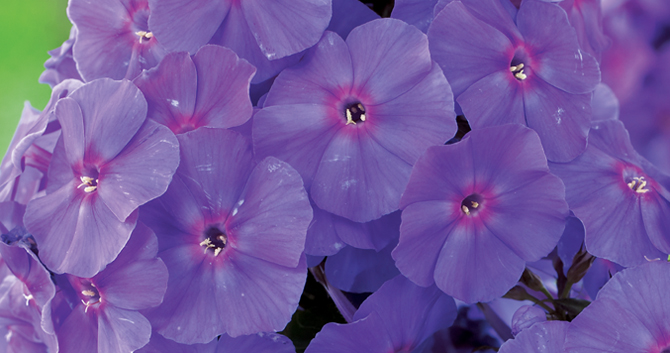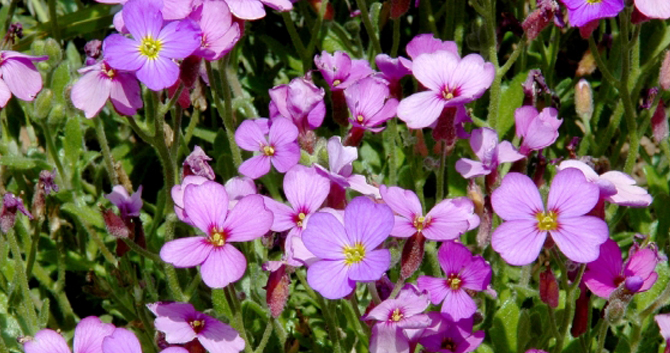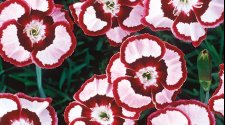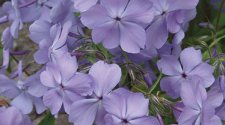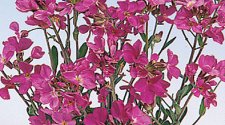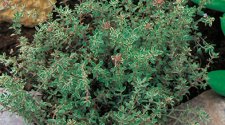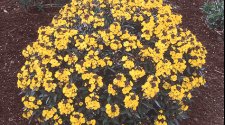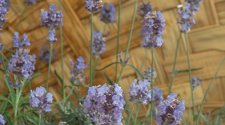Nothing is more uplifting than a garden filled with color and fragrance. Fragrance can make the difference between a pretty garden and an unforgettable one. Whether it's the scent of fresh flowers on a summer day or a garden filled with butterflies and hummingbirds, fragrance adds an extra dimension of enjoyment.
Scent has an emotional impact that visual impressions often lack. We instinctively lean into a pretty flower hoping it has an equally appealing fragrance. Scents can trigger our memory, uplift our spirits, and even help us sleep better. They contribute to our psychological and physical well-being—stimulating the brain and slowing the pulse.
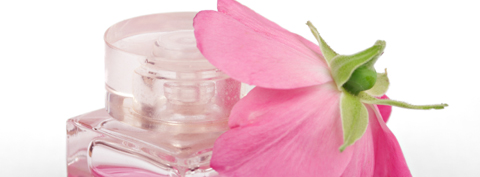 The alluring scents of many perfumes come straight from the garden
The alluring scents of many perfumes come straight from the garden
Unfortunately, modern breeding often focuses on the visual appeal of many garden favorites at the expense of fragrance. We have become accustomed to shop with our eyes and overlook some wonderful perennial plants that will reward us with perfumed blooms from early spring through the end of summer.
With garden centers offering perfumed groundcovers, spectacularly fragrant flowering trees and everything in between, integrating fragrance into a garden has never been easier. Surprisingly, many plants with fragrant foliage are unattractive to pests, making them the perfect addition to any garden.
Woodland Phlox
Woodland phlox is an early spring bloomer–its light, sweet scent gives the first hint of fragrant summer flowers. It spreads readily to carpet the ground with pretty blue flowers from April through June and thrives in shady spots where many other flowering plants struggle.
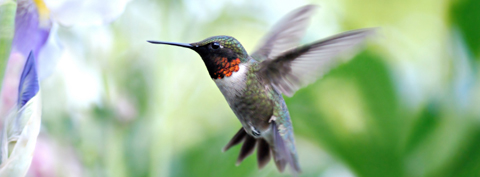 Fragrant perennials attract wildlife to the garden
Fragrant perennials attract wildlife to the garden
With small delicate flowers floating above low green foliage, woodland phlox fills in those blank spots in the early spring garden, making it a great companion plant for spring-flowering bulbs like daffodils, tulips, and allium. It also provides great contrast and color when paired with shade staples like hosta and painted ferns.
Lavender
Lavender might just be the ideal garden plant with beautiful mounds of violet flowers and an earthy, floral perfume that drifts on the breeze. Lavender blooms for weeks and is a magnet for butterflies, which flutter above the fragrant flower spikes for hours collecting nectar. Its abundant flowers on long stems offer great cut flowers for fragrant bouquets and are easily dried for long-lasting fragrance in sachets and potpourri.
Lavender makes a great companion plant for anything from roses to cabbage and is a classic choice for softening the edges of a garden path. The French pair boxwood hedges with fragrant lavender to define the contours of a formal garden, while the English combine lavender with roses to create charming, informal cottage gardens. Despite its allure for butterflies, lavender is not a delicacy for deer so it makes it a great decoy in hosta and daylily beds.
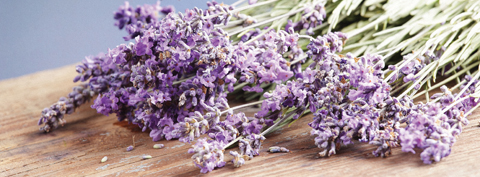 Dried lavendar makes fragrant sachets and potpourri
Dried lavendar makes fragrant sachets and potpourri
Dianthus
Dianthus is a wonderful heirloom flower that adds a feminine touch to the garden with frilly flower petals in pretty shades of pink, rose, red, scarlet, burgundy, magenta, lilac, pale yellow, salmon, orange, cream, and white. Its flowers look hand painted with stippled petals and contrasting color combinations. They bloom freely and have a spicy clove scent that attracts butterflies and hummingbirds.
Dianthus grows in compact spiky tufts that add fullness and texture to window boxes, containers, and cottage gardens. Even when not flowering, the blue-green grassy foliage adds a decorative complement to many plants. They pair as well with tall flower spikes like lavender and agastache, as they do with soft silvery foliage like lamb’s ear, artesmia, and dusty miller.
Lemon Thyme
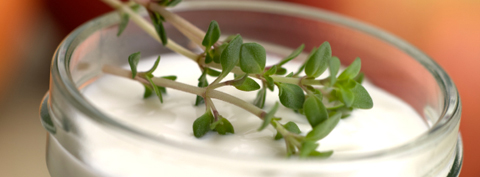 Thyme adds a bright flavor to yogurt and marinades
Thyme adds a bright flavor to yogurt and marinades
Lemon thyme is a wonderful ground cover that smells and tastes like lemons. Its fragrant pink or purple blooms emerge on bright green foliage in early to late summer, attracting butterflies and creating a wave of color that highlights taller plants.
Lemon thyme spreads easily to soften the edges of a walkway or garden and releases an invigorating citrus scent when watered, brushed, or crushed. It is a great addition to the herb garden and can be used in any recipe calling for lemon juice, lemon zest, or lemon flavoring. This plant has it all—deer resistant, insect resistant, and drought tolerant, it tolerates wind and grows well on slopes. Rabbits won’t even nibble this tasty herb.
Agastache
With trumpet-shaped blossoms that bloom from July through September, this fragrant perennial is a gardener’s dream and a must-have for bird lovers. Affectionately nicknamed “hummingbird mints,” agastache keeps tiny flutterers coming back to the garden all summer long to sip its nectar. As fall approaches, its abundant seeds are irresistible to small birds like goldfinches and orioles.
This is a lovely plant for the back of an herb garden or flowerbed. A member of the mint family, its leaves have a pretty purple tint and a spicy licorice scent. Picked fresh from the garden, they make a nice addition to herbal teas and a pretty garnish for fruit salads and summer desserts.
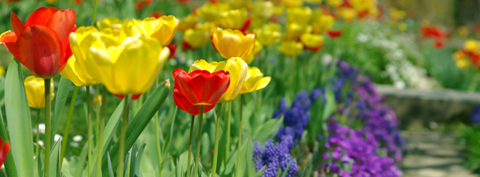 Arabis is a great companion for tulips and other spring flowers
Arabis is a great companion for tulips and other spring flowers
Arabis (Rock Cress)
More widely known as “rock cress,” arabis is a staple of alpine, rock, and trough gardens. With masses of sweetly fragrant flowers floating above mounds of olive-green leaves, its delicate appearance softens the hard edges of containers, walkways, and walls.
Native to the coastal hillsides of California, arabis pairs well with other coastal perennials like seaside daisy, bluff chickweed, and wallflower. In colder climates, its small flowers and mound of foliage perfectly complement early spring tulips and help celebrate the end of winter. It also looks beautiful when planted in front of hostas, whose scale and texture provide the perfect backdrop for these diminutive flowers.
Erysimum
Although commonly known as wallflowers because they grow in little pockets of old walls, rocks, and quarries, erysimum is anything but shy. While many spring bloomers have tentative pastel pink, lilac, and blue blooms, erysimum boasts deep chocolate-purple buds that open into clove-scented flowers in robust hues of yellow, russet, red, deep maroon, and purple.
Erysimum bloom from early spring to early summer and hold its own in bold, dramatic plantings. Its mounded flower heads contrast nicely with the spring elegance of lily-flowered tulips. In summer garden beds, Erysimum sizzles when planted with bold yellow, red, and deep brown flowers like cosmos, red-hot poker, golden scotch, blanket flower, and St. John’s wort. In container planting, erysimum pairs well with foliage plants like artemisia, grasses, ivy, and holly.
Salvia (Sage)
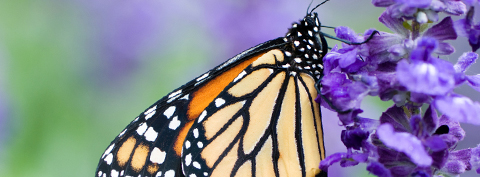 Fragrant gardens are magnets for butterflies
Fragrant gardens are magnets for butterflies
Salvia is a large family of plants that includes a wide variety of extremely fragrant sages that are beautiful in the garden and delicious freshly picked and used in recipes. Of all the wonderful salvias available, the pineapple-scented varieties such as golden delicious are true garden standouts. With highly aromatic leaves with a fruity pineapple fragrance, they are the next best thing to a first-class ticket to Hawaii.
Look for varieties with chartreuse leaves and fire-engine-red flowers to add vibrant color that energizes the mood of the entire garden. Their tropical fragrance is adored by hummingbirds and butterflies, but ignored by hungry deer.



